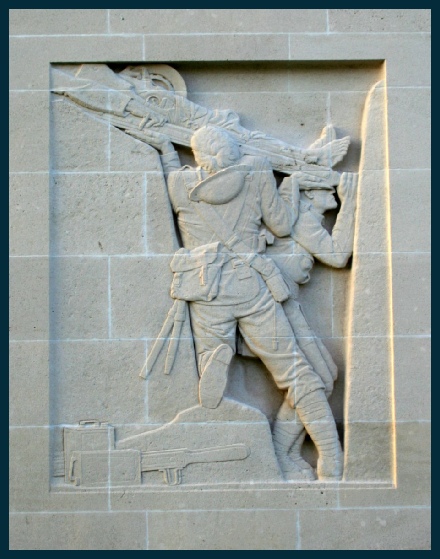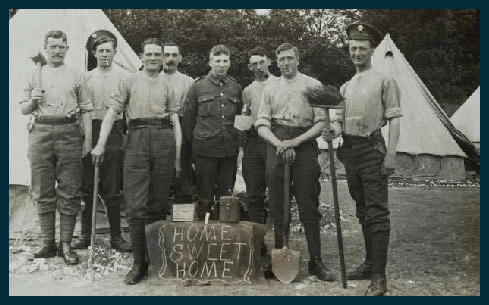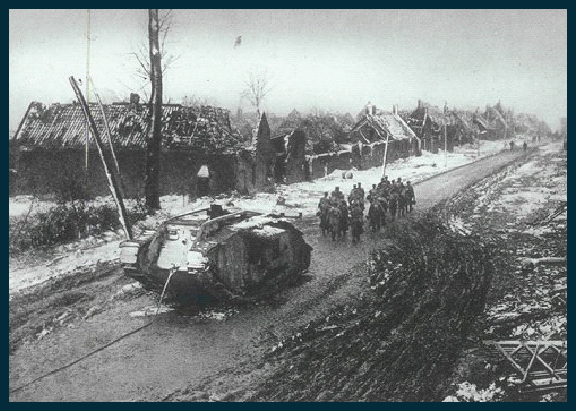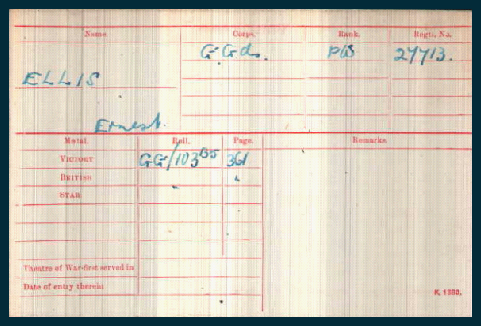Copyright © All rights reserved.



Ernest Ellis

Ernest Ellis was the second son of John and Maria (nee Milson) Ellis who married in the second quarter of 1880 in the Malton area. He was baptised in St Michael’s Church, Malton on 26th July 1882.
John and Maria lived in Stephen’s Yard, much of which has been demolished to make way for Sainsbury’s. In one of these houses, most of which were two-
1891 Census. Resident at Stephens Yard, St Michaels, Malton, Yorkshire, England
John Ellis, Head, Married, Male, 40, Chimney Sweep, Malton, Yorkshire
Maria Ellis, Wife, Married, Female, 27, -
Frank Ellis, Son, -
Ernest Ellis, Son, -
Arthur Ellis, Son, -
Albert Ellis, Son, -
John William Ellis, Son, -
Ada Ellis, Daughter, -
Ten years later they were definitely living at No 10 and the four older boys now had jobs; Ernest was working as a messenger at the Post Office.
1901 Census resident at Stephens Yard, 10, Newbiggin, Malton, Yorkshire, England
John Ellis, Head, Married, Male, 50, Chimney Sweep, Malton, Yorkshire,
Maria Ellis, Wife, Married, Female, 39, -
Frank Ellis, Son, Single, Male, 20, Fish Merchant Assistant, Malton, Yorkshire,
Ernest Ellis, Son, Single, Male, 18, Post Office Messenger, Malton, Yorkshire,
Arthur Ellis, Son, Single, Male, 17, Butcher Errand Boy, Malton, Yorkshire,
Albert, Ellis, Son, Single, Male, 14, Fish Merchant Apprentice, Malton, Yorkshire,
John Wm Ellis, Son, Single, Male, 12, -
Sidney Ellis, Son, Single, Male, 5, -
Bernard Ellis, Son, Single, Male, 3, -
Harry Ellis, Son, Single, Male, 1, -
Ernest married Eliza Maria Harper in the Malton area in the third quarter of 1903 and according to the 1911 census had two children Hearbert , born in 1903 and Jessie born in Leeds in 1905. It has proved impossible to trace the children – possibly they were both born, or at least registered in Leeds, as there are two births in Hunslet that seem to fit.
1911 Census resident at 3 Old Talbot Inn Yard Market Street Malton, Malton, Yorkshire, England
Ernest Ellis, Head, Married, Male, Mineral Water Laberer, 28, Malton Yorks
Eliza Ellis, Wife, Married, Female, -
Hearburt Ellis, Son, -
Jessie Ellis, Daughter, -
The battalions achieved their objectives despite severe setbacks but they had no reinforcements, while the enemy had plenty. The photograph shows a British tank, damaged and captured in Fontaine Notre Dame, once the Germans had defeated the Guards Division attack through the village.
By the end of the day the Grenadiers and Coldstreams had lost every officer and most of their NCOs, and the Irish Guards had lost 320 all ranks out of 400. Any prisoners they had were able to escape through lack of men to guard them. Thee casualties sustained by the Guards from 25 Nov to 5 Dec were 118 killed and 2882 wounded. Among these was Ernest Ellis, presumed dead on 27th November 1917. His body was not recovered and he is commemorated on the Cambrai memorial which commemorates more than 7,000 servicemen of the United Kingdom and South Africa who died in the Battle of Cambrai in November and December 1917 and whose graves are not known.
Sir Douglas Haig described the object of the Cambrai operations as the gaining of a 'local success by a sudden attack at a point where the enemy did not expect it' and to some extent they succeeded. The proposed method of assault was new, with no preliminary artillery bombardment. Instead, tanks would be used to break through the German wire, with the infantry following under the cover of smoke barrages. For the Allies, the results of the battle were ultimately disappointing but valuable lessons were learnt about new strategies and tactical approaches to fighting. The Germans had also discovered that their fixed lines of defence, no matter how well prepared, were vulnerable.
Ernest is commemorated on Malton Town Memorial and on the memorial in St Michael’s Church.
Ernest probably joined the Grenadier Guards in December 1916 and it would seem likely that he was one of the 80 Other Ranks who joined the 3rd Battalion at Le Mesnil about 15 miles south-
At this point they were engaged in working on the railways and undergoing training in communications and Bayonet fighting until they moved back to Clery on 12th . Here they continued training and engaging in sports including “Excellent bathing” in the River Somme. On the 15th they were inspected by the King of the Belgians, and they continued this reasonably pleasant existence moving from camp to camp throughout May and the first part of June.
On 18th June, they moved into the support line in bivouacs, where they came under shell fire and suffered light casualties and this pattern continued through the rest of the month.
July saw them preparing for a major offensive. Preparations were enlivened by an inspection by H.M. the King on the 6th, after which practices and familiarisation exercises continued apace until the time when plans of the proposed battle were produced and made available to the battalion.
At 3.50am on 31 July 1917 the attack at Boesinghe commenced. After an issue of hot tea and rum the Battalion crossed the Yser Canal and advanced across the Pilckem Ridge towards the outskirts of Langemarck. By the morning of August the first they had established a new HQ and held their position, at the cost of 26 dead and 125 wounded or missing. Over 5,000 men were killed and wounded here on that day, the most murderous of the entire war in the Ypres Salient.
On 19th August the battalion moved by bus to Herzeele for training before being sent into tented camps to lay duckboards in the front line and to undergo individual training. Such tented camps provided little shelter from shellfire and the battalion suffered some forty casualties as a result of this on their first day there. On 17th September they were moved to the front line where they underwent heavy shelling sustaining some 30 casualties in four days.
They returned to Herzeele where preparations were under way for the Battle of Poelcapelle. This battle on 9 October 1917 marked the end of the string of highly successful British attacks in late September and early October 1917 . Only the supporting attack in the north achieved a substantial advance. On the main front the German defences withstood the limited amount of artillery fire managed by the British after the attack of 4 October. The ground along the main ridges had been severely damaged by shelling and rapidly deteriorated in the rains, which began again on 3 October, which in some areas turned the ground into a swamp. Dreadful ground conditions had more effect on the British, who needed to move large amounts of artillery and ammunition to support the next attack. The battle was a defensive success for the German army, although costly to both sides. The weather and ground conditions put severe strain on all the infantry involved and led to many wounded being stranded on the battlefield. Unfortunately the battalion account of the battle has not survived. They clearly sustained substantial casualties and Lance Sergeant J.H. Rhodes was awarded the V.C.
After being relieved they moved to Moulle for reorganisation and training. The diary records good billets and a visit from the Duke of Connaught. 19 Military medals were awarded as a result of the action on 9th October.
November saw the battalion constantly on the move mainly in the form of route marching until 24th November when they arrived in the support trenches of the Hindenburg Line at Ribecourt. This was part of a new strategy being employed at Cambrai in an effort to break through the Hindenburg Line. There was to be no prelude of several hours of artillery bombardment. The attack was intended to be a surprise and tanks were to play a prominent part. On 20th November the advance began under a creeping barrage, but the Guards were in reserve at this point. The early part of the day proved the success of the strategy but by evening the tables had turned and the Germans asserted themselves and contained the British short of their objectives. The following day the Guards Division were ordered to relieve the 51st Highland Division at Fontaine-

On the 26th the battalion took over the line to-
On the 27th the battalion went into action at 6.20 a.m. Unfortunately the separate account of the battle is missing from the War diary.
The objective of the 2nd Guards Brigade was Bourlon Wood along with the village of Fontaine-

